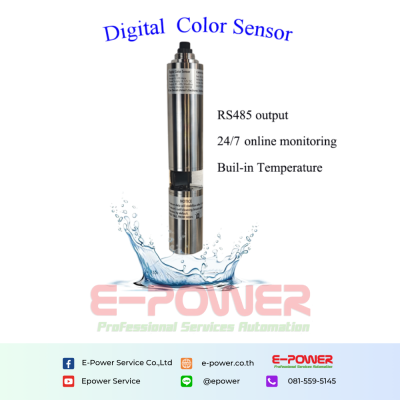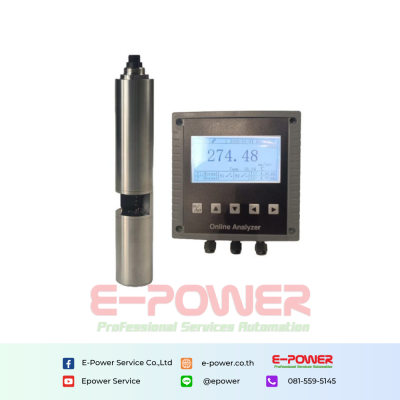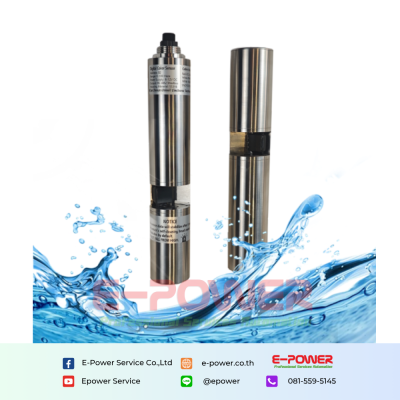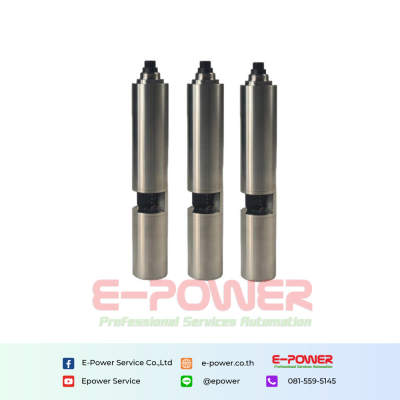



DS660 Water Colour Sensor for Real-time Colour Monitoring
Overview:
DS660 Online Self-Cleaning Colour Sensor, using our own R & D and design of optical devices, color sensor using optical absorption method of measurement principle, input installation online measurement, avoiding the process of complex sampling and laboratory measurements. No reagents, no pollution, more economical and environmentally friendly. Compact size, easy maintenance, the sensor with an automatic cleaning brush, and automatic compensation for turbidity interference, even for long-term online water quality monitoring still has excellent stability. It can be widely used for monitoring drinking water, surface water, municipal and industrial wastewater processing.
Features of DS660 Colour Sensor
-Digital RS-485 signal with standard MODBUS protocol;
-Automatic compensation for turbidity interference ensures more accurate data and stable product performance;
-Equipped with a self-cleaning brush to prevent microbial buildup, a longer maintenance cycle;
-Built-in calibration parameters for easy on-site use and secondary calibration;
-Real-time continuous online measurement.
Specifications:
| Product | Online Self-Cleaning Colour Sensor |
| Model | DS660 |
| Measurement Principle | Absorption Method |
| Measurement Range | 0-500 Haze or 0-5500mg/l pt |
| Linearity | R²>0.999 |
| Temperature Range | 0-50°C |
| Maximum Pressure | 3bar |
| Protection Level | IP68 |
| Sensor Interface | Support RS-485, MODBUS protocol |
| Installation Method | Drop-in installation (optional mounting bracket) |
| Power Supply | Recommended: DC 9-12V |
| Size | Φ46*254mm |
| Probe Cable Length | 5 meters (default), can be customized |
| Calibration | One-point or two-points calibration |
| Body Material | 316L or titanium alloy |
Applications of DS660 Online Self-Cleaning Colour Sensor
-Wastewater Treatment:
Sensors measure the color of wastewater to ensure it is properly treated before being discharged into the environment. Color changes can indicate the presence of pollutants or incomplete treatment.
-Aquaculture Water Quality Monitoring:
In fish farms and aquatic cultivation, color sensors monitor the clarity and cleanliness of water, which is crucial for maintaining healthy aquatic ecosystems.
-River and Lake Monitoring:
Color sensors help detect changes in water quality, which may indicate pollution, algae growth, or sediment disturbances.
-Process Water Quality Control:
Many industries, such as food processing, paper production, and textiles, use color sensors to monitor process water quality, ensuring product consistency and regulatory compliance.
-Effluent Discharge:
Monitoring the color of water discharged from industrial processes helps companies ensure that wastewater meets acceptable environmental standards.
-Drinking Water Treatment:
Color sensors help monitor the color of treated water to ensure it meets regulatory standards and is free from contaminants that can affect the taste or appearance of drinking water.
- หน้าหลัก หน้าหลัก
- สินค้าอุตสาหกรรม สินค้าอุตสาหกรรม
- สินค้าเซนเซอร์ สินค้าเซนเซอร์
- บริการของเรา บริการของเรา
- บทความและข่าวสาร บทความและข่าวสาร
- ติดต่อเรา ติดต่อเรา



